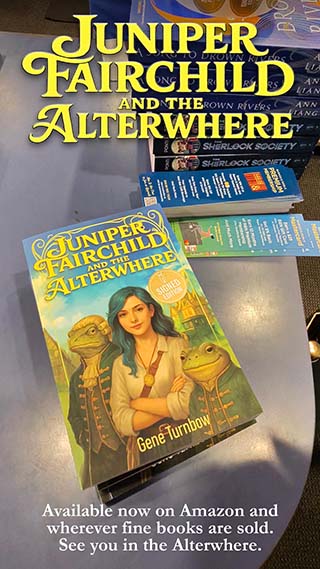Key Takeaways
- Ray Harryhausen was a pioneering special effects artist and master of stop-motion animation.
- He created iconic special effects for classic films like Jason and the Argonauts, The 7th Voyage of Sinbad, and Clash of the Titans.
- Harryhausen developed a technique called 'Dynamation' to integrate live-action footage with animated models.
- He received numerous accolades, including an honorary Academy Award and recognition from filmmakers like George Lucas.
- Harryhausen's legacy continues through the foundation established by him and his wife to preserve his work and promote stop-motion animation.

Who was Ray Harryhausen?
Raymond Frederick Harryhausen was hailed as one of the greatest special effects artist who ever lived, and after Willis O’Brien, the undisputed master of stop-action animation. He inspired generations of filmmakers and effects artists, and his works are considered classics in the genre.
Harryhausen was born June 29, 1920, which would have made him 105 years old today had he lived.
Harryhausen was responsible for the special effects in such films as It Came from Beneath the Sea (1955), The 7th Voyage of Sinbad (1958), Jason and the Argonauts (1963), First Men in the Moon (1964), One Million Years B.C. (1966), The Valley of Gwangi (1969), The Golden Voyage of Sinbad (1973), Sinbad and the Eye of the Tiger (1977), and Clash of the Titans (1981), after which he retired from feature filmmaking.
Long before CGI (computer generated imagery) was invented, special effects were created by a tedious, painstaking process called stop-motion animation. Encyclopedia Britannica defines stop-motion animation as “the frame-by-frame photographing of a similarly phased series of drawings or the phased movement of such objects as puppets, marionettes, or commercial products. And, as in live filming, the camera itself can create movement.”
In those days, matte paintings, trick compositing, forced perspective model shots and stop-motion animation were the only ways to get epic events onto film. The same techniques Harryhausen pioneered will still in use right up to the dawn of the digital age where computers began to be used for visual effects (the early 90’s).
One of his greatest masterpieces was the famous skeleton fight scene in Jason and the Argonauts (1963).
Ray Harryhausen developed a process called “Dynamation,” which was used to make it appear that actors on film are interacting with animated models. As in The Seventh Voyage of Sinbad, when Sinbad and his men had to escape a horned Cyclops.

After seeing King Kong when it was first released in 1933, young Ray was fascinated by the stop motion effects of pioneering special effects artist Willis O’Brien. Young Harryhausen worked with models and marionettes to attempt making amateur short films with stop-motion animation. Living in Los Angeles, he was able to meet O’Brien when he was only eighteen. O’Brien mentored Harryhausen and advised him to take art and anatomy classes at Los Angeles City College and later in film courses at the University of Southern California. These classes and O’Brien’s tutelage improved Harryhausen’s filmmaking.
Harryhausen got his first professional animating job in 1940, working with George Pal (1908-1980) of Time Machine fame on a series of Pippetoons, short films using puppets for stop-motion animation. Being the early 1940s, Harryhausen of course joined the army, but the army gave Harryhausen a camera instead of a rifle. He made war propaganda films with future Oscar-winner Frank Capra. He also worked with Oscar-winning composer Dimitri Tiomkin and Ted Geisel, who was not yet using the pen name Dr. Seuss.
Eventually Harryhausen would work with O’Brien on Mighty Joe Young (1949). Although Harryhausen was hired as an assistant animator and credited as First Technician, Special Effects, he did enough of the work that he, not O’Brien, received an Oscar for Best Special Effects.
The first film where Harryhausen was in charge of special effects was The Beast from 20,000 Fathoms (1953). Harryhausen was a friend and fan of Ray Bradbury. The movie was loosely based on Bradbury’s story “The Fog Horn,” originally published in the Saturday Evening Post in June 1951.
Awards and Accolades
In Pixar’s Monsters, Inc. (2001_, when Mike Wazowski takes Celia to Harryhausen’s for a romantic evening for two, the restaurant is named for Ray Harryhausen.
The Clash of the Tians (1981) was nominated for a Saturn Award for Best Special Effects.
His accolades include the honorary Gordon E. Sawyer Academy Award, an honorary BAFTA, and the Lifetime Achievement Award from the Visual Effects Society. as well as the respect and admiration of dozens of filmmakers and millions of fans. George Lucas said “Without Ray Harryhausen, there would likely have been no Star Wars.” Harryhausen inspired and influenced nearly every fantasy and sci-fi filmmaker of the 21st century, and most of them from the 20th century.
Ray Harryhausen emigrated to the U. K. in 1960. He acquired dual citizenship, British and American. In 1963, he married Diana Livingstone Bruce. They had a daughter, Vanessa. Ray Harryhausen died in London, May 7, 2013, and is buried in Norfolk.
After he retired from filmmaking, he concentrated on writing. He and his wife founded the Ray and Diana Harryhausen Foundation to preserve his models and drawings and to encourage the legacy of stop-motion animation.
To say that Harryhausen inspired us all seems unremarkable. In a world that has time to rack up a pantheon of legendary figures in every creative field. we say that about a lot of people. But the work of Ray Harryhausen, in specific, is so much a part of the DNA of modern filmmaking that he stands apart from the rest. What he did will live on in us as we keep moving forward, creating each successive generation’s cinema art.
The word “inspiring” just doesn’t do him justice.
![]()
Susan Macdonald is the author of the children's book "R is for Renaissance Faire", as well as 26 short stories, mostly fantasy in "Alternative Truths", "Swords and Sorceress #30", Swords &Sorceries Vols. 1, 2, & 5, "Cat Tails" "Under Western Stars", and "Knee-High Drummond and the Durango Kid". Her articles have appeared on SCIFI.radio's web site, in The Inquisitr, and in The Millington Star. She enjoys Renaissance Faires (see book above), science fiction conventions, Highland Games, and Native American pow-wows. Her nonfiction book THEY ENDURED will be published by B Cubed Press in 2025 or 2026.













Ray Harryhausen did some incredible work that, back then, very few could do. And so much of later work has been inspired by Harryhausen’s work,